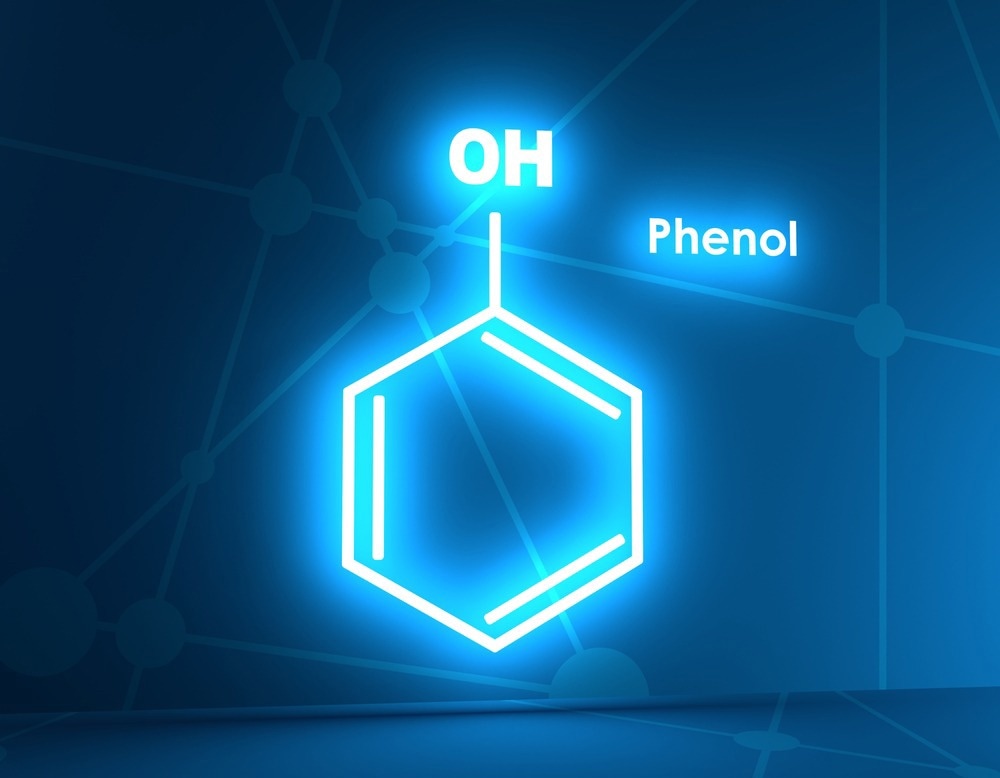One-step phenol hydrogenation is a convenient and cost-effective method of producing cyclohexanone. However, developing phenol hydrogenation catalysts with enhanced catalytic efficiency and facile recovery remains a considerable challenge.

Study: Pd-Decorated Hierarchically Porous Carbon Nanofibers for Enhanced Selective Hydrogenation of Phenol. Image Credit: GrAl/Shutterstock.com
A recent study published in the journal Industrial & Engineering Chemistry Research addresses this issue by using highly porous palladium-decorated carbon nanofibers as high-performance catalysts for targeted phenol hydrogenation.
Phenol Hydrogenation: Why is it Important?
Cyclohexanone, an essential organic raw ingredient for producing Nylon-6 and Nylon-66, is mostly created by cyclohexane oxidation or phenol hydrogenation. In addition to requiring high reaction pressure and temperature, the cyclohexane oxidation approach creates unwanted byproducts. Besides, this technique demonstrates poor conversion and selectivity.
Cyclohexanone can also be produced by either a one-step or two-step phenol hydrogenation process. Phenol hydrogenation, particularly the one-step procedure, is recognized as the most energy-efficient and cost-effective method for producing cyclohexanone since it decreases energy usage by a substantial amount.
However, cyclohexanone is readily hydrogenated to cyclohexanol and other derivatives in the absence of suitable catalysts. Therefore, there is an essential need for catalysts with a high phenol conversion and cyclohexanone specificity.
Carbon Nanofibers as Catalysts for Phenol Hydrogenation
Carbon substances are extensively used as suitable metal catalyst carriers in producing delicate chemicals due to their large specific area, excellent stability, and low price. However, conventional carbon material-supported catalysts suffer from poor metallic distribution, insufficient use of active sites, and limited catalyst restoration during heterogeneous photocatalysis.
Compared to typical carbon carriers, one-dimensional patterned carbon nanofibers (CNFs) with micro-nano diameters are better suitable for metallic nanoparticle adsorption and distribution. Carbon nanofibers also have excellent conductance, specific stiffness, and extended cycle life, making them suitable catalysts for phenol hydrogenation.
Unfortunately, unaltered carbon nanofibers have several drawbacks, such as a low specific area and metal seeping. By reducing structural flaws and adding heteroatoms such as oxygen and nitrogen, carbon nanofibers' morphological structure and chemical characteristics can be enhanced, consequently boosting the surface area and the durability of metallic nanoparticles on the carbon nanofibers.
Enhancing Catalytic Performance of Carbon Nanofibers
Oxygen (O) heteroatoms are often incorporated into carbon nanofibers to improve their catalytic performance because the loading of oxygen atoms is favorable to metal anchorage and dispersal. Typical oxygen introduction techniques depend on powerful oxidants such as sulphuric acid and nitric acid stimulating carbon compounds.
Previously, carbon nanofibers were functionalized with oxygen atoms by acid hydrolysis, which introduced various oxygen-containing groups and phosphates to the interface of carbon nanofibers. The catalysts produced using this approach demonstrated outstanding stability. However, these conventional oxygen activation techniques are not environmentally friendly, and the post-treatment procedure is difficult, restricting their future development.
Highlights of the Current Study
In this study, oxygen was chosen as the oxidant to stimulate and alter the carbon nanofibers during high-temperature decomposition due to its green, ecologically friendly, and low-cost properties. The researchers used zeolitic imidazolate framework-67 (ZIF-67) to construct carbon nanofiber-based composite membranes.
The mechanical properties and surface chemical characteristics of the hybrid carbon nanofibers were modulated by varying the initial oxygen content during decomposition. The oxygen-modified composite carbon nanofibers were then impregnated with palladium to create high-performance catalysts.
The impact of trace oxygen alteration on the catalytic characteristics of the as-fabricated catalysts was examined using the liquid-phase phenol hydrogenation technique. Since the concentration of cobalt (Co2+) in ZIF-67 could affect the nanostructures and catalytic efficiency of the as-prepared catalysts, the influence of Co2+ content was also studied in this research.
Important Findings
The phenol hydrogenation efficiency was used as an assessment benchmark for the palladium-decorated carbon nanofibers (Pd@CNFs). The Co2+ concentration of ZIF-67 demonstrated no catalytic activity for liquid-phase phenol hydrogenation, validating the need for palladium loading.
The initial oxygen content during carbonization had a substantial impact on the morphology and surface characteristics of the catalysts, as well as their catalytic efficiency for phenol hydrogenation to cyclohexanone. Under ideal circumstances, the palladium-based carbon nanofibers demonstrated extraordinary catalytic performance, with a cyclohexanone specificity of 93.1%, a phenol reduction of 97.6%, and high reusability.
Based on these findings, future research should focus on developing Pd@CNF catalysts with good mechanical characteristics and realizing continuous phenol hydrogenation using these high-performance catalytic membranes.
Reference
Qu, Z. et al. (2022). Pd-Decorated Hierarchically Porous Carbon Nanofibers for Enhanced Selective Hydrogenation of Phenol. Industrial & Engineering Chemistry Research. Available at: https://pubs.acs.org/doi/10.1021/acs.iecr.2c02703
Disclaimer: The views expressed here are those of the author expressed in their private capacity and do not necessarily represent the views of AZoM.com Limited T/A AZoNetwork the owner and operator of this website. This disclaimer forms part of the Terms and conditions of use of this website.